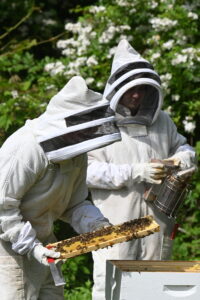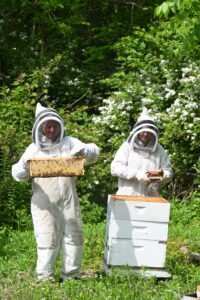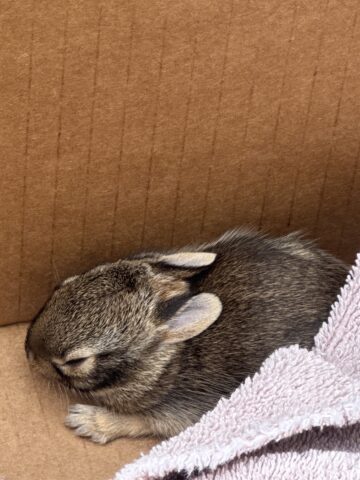 This February, we were thrilled to celebrate a new milestone in our pollinator stewardship and beehive care: TerraCorps Land Stewardship Coordinator, Kathleen Matthews, and Properties Manager, John Richmond, officially became “Bee Certified” through the Rhode Island Beekeepers Association (RIBA) at Rhode Island College. They join Joye Whitney, our Director of Horticulture and Conservation, as NBS staff members holding this certification. With additional trained eyes on our hive, we are better equipped to care for our 10,000 resident Italian Honeybees (Apis Mellifera).
This February, we were thrilled to celebrate a new milestone in our pollinator stewardship and beehive care: TerraCorps Land Stewardship Coordinator, Kathleen Matthews, and Properties Manager, John Richmond, officially became “Bee Certified” through the Rhode Island Beekeepers Association (RIBA) at Rhode Island College. They join Joye Whitney, our Director of Horticulture and Conservation, as NBS staff members holding this certification. With additional trained eyes on our hive, we are better equipped to care for our 10,000 resident Italian Honeybees (Apis Mellifera).
To ensure their survival and health, especially during periods of limited access to nectar and pollen, our team supplements their diet as needed. Nectar is a sugary liquid produced by flowers to attract pollinators, while pollen is a protein-rich substance that bees gather to feed to larvae. Both pollen and nectar are found on different parts of a flowering plant. In New England, bees face natural shortages of pollen and nectar in early spring as well as late summer into fall, as there are gaps in blooms and overall plant productivity.
To bridge these nutritional gaps, we prepare a simple sugar water solution to support the hive. Our go-to recipe is a simple 1:1 ratio; 6 cups of water and 6 cups of sugar for our medium-sized hive. The mixture is boiled until fully dissolved, then cooled off and transferred into 4 small ziploc bags. These are then transported to our hive, located off the Universal Trail and placed on top of the frames. Finally, a small incision is made so the bees can access the sugar water.
Hive checks are done bi-weekly to monitor bee activity. By late-June we no longer feed the bees as there is plenty of diverse flowers and shrubs to support their needs. In the colder months, we switch to using sugar cakes, a dense version of food that withstands low temperatures. These supplemental food sources support the bees alongside their natural foraging and help maintain health year-round.
 The hive is made up of several stacked layers, each serving a unique purpose. At the base is the floor, which provides ventilation and a landing pad for the bees. Above this sits the brood box, where the queen lays her eggs, and young bees are raised. Sitting between this and the upper layers is a queen excluder – a screen that allows for worker bees to pass through but keeps the queen below, preventing her from laying eggs where honey is stored. The upper boxes, called supers, are reserved for honey production! Capping it all off is the hive cover, which protects the entire hive from weather and curious wildlife, such as skunks and raccoons.
The hive is made up of several stacked layers, each serving a unique purpose. At the base is the floor, which provides ventilation and a landing pad for the bees. Above this sits the brood box, where the queen lays her eggs, and young bees are raised. Sitting between this and the upper layers is a queen excluder – a screen that allows for worker bees to pass through but keeps the queen below, preventing her from laying eggs where honey is stored. The upper boxes, called supers, are reserved for honey production! Capping it all off is the hive cover, which protects the entire hive from weather and curious wildlife, such as skunks and raccoons.
With regular attention and care from our Bee Team, we look forward to the continued health and productivity of our hive at NBS this summer season!

